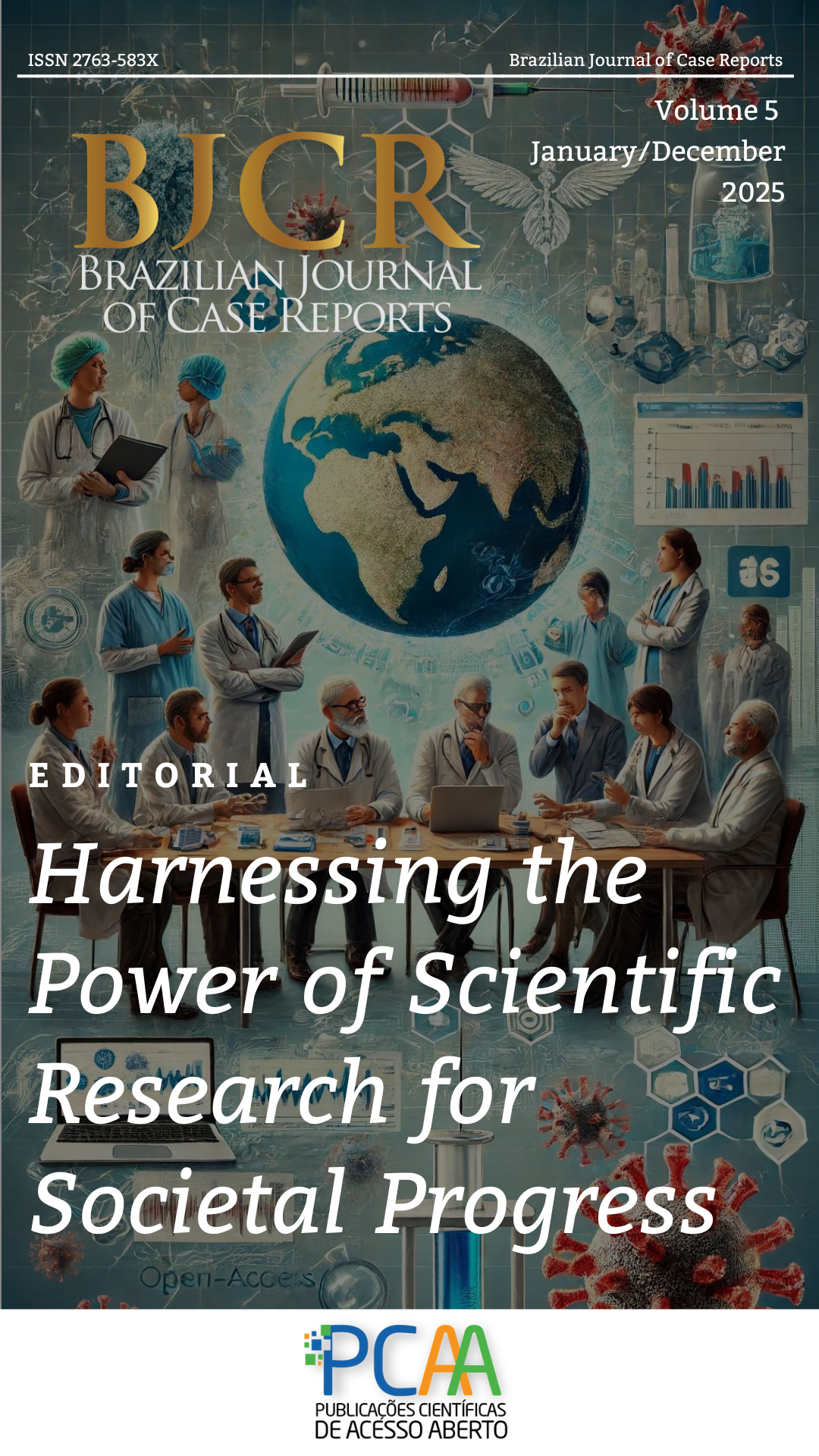Ramsay Hunt Syndrome – Case Report
Main Article Content
Abstract
Ramsay Hunt Syndrome (RHS) results from the reactivation of the varicella-zoster virus (VZV). Its incidence is approximately 5 per 100,000 people per year. The clinical presentation is variable, with the most common manifestation being ipsilateral facial paralysis, otalgia, and vesicular rash. Several factors increase the risk of herpes zoster and, consequently, the incidence of RHS. A 60-year-old woman presented with left-sided peripheral facial paralysis, otalgia, and vesicles on the ipsilateral auricle and external auditory canal. Laboratory tests and cranioencephalic computed tomography showed no significant acute changes. She was diagnosed with RHS and treated accordingly, subsequently showing a favorable evolution. Studies to date demonstrate the benefit of combined antiviral and corticosteroid therapy. Early treatment initiation, within the first 72 hours, is associated with a better prognosis and minimizes the risk of permanent neurological damage.
Article Details

This work is licensed under a Creative Commons Attribution 4.0 International License.
Authors retain the copyright of their articles and grant the journal the right of first publication under the Creative Commons Attribution (CC BY) license, which allows others to share and adapt the work with proper attribution.
References
Patidar M, Singh G, Subhalakshmi V, Balasubramanian S, Ealla KR. Ramsay Hunt syndrome: A diagnostic challenge for general dental practitioners. Contemp Clin Dent. 2017;8(2):337. https://doi.org/10.4103/ccd.ccd_1099_16.
Crouch AE, Hohman MH, Moody MP, Andaloro C. Ramsay Hunt Syndrome. PubMed; StatPearls Publishing. 2023. Available from: https://www.ncbi.nlm.nih.gov/books/NBK557409/.
Monsanto R, Bittencourt A, Bobato Neto N, Beilke S, Lorenzetti F, Salomone R. Treatment and prognosis of facial palsy on Ramsay Hunt syndrome: Results based on a review of the literature. Int Arch Otorhinolaryngol. 2016;20(4):394–400. Available from: https://www.ncbi.nlm.nih.gov/pmc/articles/PMC5063726/pdf/10-1055-s-0036-1584267.pdf.
Kumar Ghezta N, Bhardwaj Y, Ram R, Basi R. Ramsay Hunt Syndrome: A diagnostic dilemma. Natl J Maxillofac Surg. 2022;13(Suppl 1):S179–82. Available from: https://www.ncbi.nlm.nih.gov/pmc/articles/PMC9651248/pdf/NJMS-13-179.pdf
Jeon Y, Lee H. Ramsay Hunt syndrome. J Dent Anesth Pain Med. 2018;18(6):333. Available from: https://www.ncbi.nlm.nih.gov/pmc/articles/PMC6323042/?report=reader.
Sweeney CJ, Gilden DH. Ramsay Hunt syndrome. J Neurol Neurosurg Psychiatry. 2001;71(2):149–154. Available from: https://jnnp.bmj.com/content/jnnp/71/2/149.full.pdf.
Cascais Costa J, Pereira C. Ramsay Hunt syndrome: An uncommon presentation in an immunocompetent patient. Galicia Clínica. 2018;79(1):30. https://doi.org/10.22546/47/1289.
Kim SJ, Lee HY. Acute peripheral facial palsy: Recent guidelines and a systematic review of the literature. J Korean Med Sci. 2020;35(30):e245. Available from: https://www.ncbi.nlm.nih.gov/pmc/articles/PMC7402921/.
Goswami Y, Gaurkar SS. Ramsay Hunt Syndrome: An introduction, signs and symptoms, and treatment. Cureus. 2023. Available from: https://doi.org/10.7759/cureus.33688.
